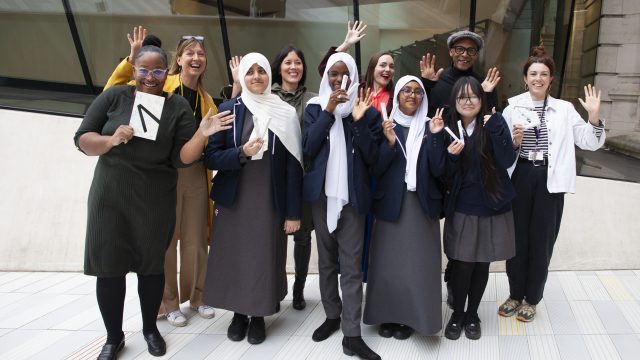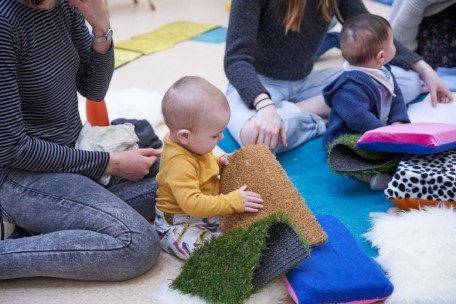This week’s object is a book, a deluxe manuscript copy of Pliny the Elder’s Natural History, written and illuminated in the 1460s, probably in Rome, for the Sienese scholar and lawyer Gregorio Lolli Piccolomini, a cousin of Pope Pius II, who became papal secretary in 1459 – one of several family members appointed to lucrative posts in Pius’s administration. It’s a huge volume, measuring 42 x 29 cm, consisting of 525 leaves of high quality parchment (the binding is from the eighteenth century). Books like this were meant for display, probably in a private study, where they could be enjoyed by the owner but also shown off to privileged visitors – the renaissance equivalent of an immensely extravagant coffee table book.

Rome(?), c.1465, Pliny the Elder, Naturalis Historia (Natural History). Parchment. Museum Ref: MSL.1896.1504. © Victoria and Albert Museum, London
The Natural History is an encyclopaedic work complied by the obsessively curious Roman writer Pliny, whose thirst for knowledge led to his death whilst recording the eruption of Vesuvius near Pompeii in 79 AD. Though Pliny’s text was known in part and hugely respected as a source of knowledge in the middle ages, the first complete copy was not discovered until around 1430, by a Florentine, Niccolò Niccolì. He belonged to the pioneering generation of Italian humanist scholars who were passionate about discovering forgotten classical texts, hunting them out in remote corners of Europe – the Natural History turned up in a monastic library at Lübeck in northern Germany – and who played an essential part in the intellectual ‘revolution’ of the renaissance. In this cultural climate, to own a new copy of Pliny’s text became highly desirable, though in the era before printing available to only the elite, such as Piccolomini.
The V&A Pliny is written in beautiful humanist script by the scribe Jacopo della Pergola. His clear, rounded letters, easily legible, are based on late antique script and are the immediate precursors of the script we use today, very different from the gothic letters that were still current in many parts of Europe. Each of the thirty-seven books of the Natural History opens with a richly decorated initial featuring a fashionable white-vine motif, and features imagery relating to the material in the pages that follow. These were painted by an anonymous illuminator, perhaps Florentine or Sienese, who had a lively and inventive pictorial imagination.

Rome(?), c.1465, Pliny the Elder, Naturalis Historia (Natural History). Parchment. Museum Ref: MSL.1896.1504. © Victoria and Albert Museum, London
The opening initial V of Book 37, On Gems, shows two men who appear to be conducting a transaction: the man in the red cloak and hood, whose dress suggests he is a wealthy merchant or collector, points to an antique engraved gem hanging as if from the frame of the initial itself. On either side of this are two large rings set with gemstones. The other, less well dressed man, points to some coloured stones at his feet; a small leather purse appears to pass between them. In the roundels below are scenes of jewellers working on gems. To the left is a man using a bow drill to cut stones, with a display case open on his table, containing stones and some pieces of coral; the jeweller to the right is working on an oversized ring, with a small display cupboard open beside him.

Rome(?), c.1465, Pliny the Elder, Naturalis Historia (Natural History). Parchment. Museum Ref: MSL.1896.1504. © Victoria and Albert Museum, London
Pliny’s Natural History was especially revered in artistic circles because it contains the fullest known account of the great painters and sculptors of classical antiquity such as Apelles and Xeuxis. In the V&A Pliny, Book 35, On Painting, contains depictions of contemporary artists at work. At the top of the initial M we see a painter decorating a blue and gold ceiling; before him, on a trestle table, are his pots of ready-mixed paints. His colours will have been produced in the manner seen at bottom left, where another artist is at work grinding pigments on a circular porphyry slab. To the right, an artist is seen painting a cassone or marriage chest (a type of object we’ll look at in a few weeks’ time); two more cassoni, one of them still unpainted, are stored under his table, while on the back wall hang a pair of painted coats of arms, a reminder that the work of a painter in this period was wide ranging and included the production of objects that we might now think of as relatively humdrum.
In short, the V&A Pliny typifies many things about the early Italian renaissance. It denotes the contemporary revival of interest in classical antiquity, and is also a reminder of the importance, in elite circles, of display – of wealth, but also increasingly of intellectual knowledge, particularly of famous classical writers. It is a superb example of high quality, mid fifteenth-century Italian book production. For the modern viewer, its illustrations of contemporary life make it especially fascinating. It’s on display in the section of Gallery 64 that’s devoted – appropriately – to the renaissance studiolo, or private study. There you’ll see it opened at Book 13, On Foreign Trees and their use in supplying scent, fruit, paper and wood, showing a couple of merchants riding on camels, alluding to contemporary trade with the East.


